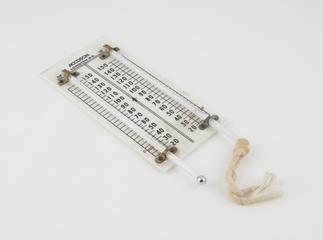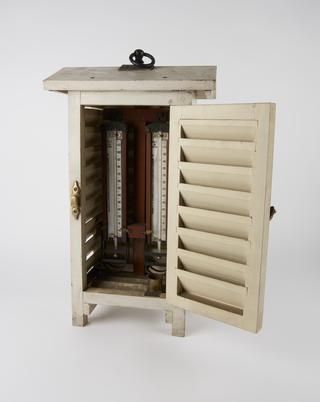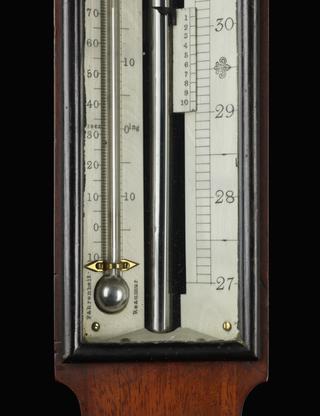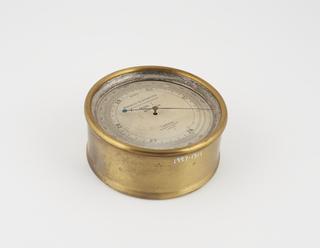
Pocket sympiesometer, 1839
- Made:
- 1839
- maker:
- John George Harris Ronketti and Carpenter and Westley
Pocket sympiesometer, invented by John George Harris Ronketti, in leather covered wooden case, made by Carpenter & Westley, 24 Regent Street, London, 1839
Mercury barometers needed to have two tubes that were at least 33 inches long, and were generally cumbersome to carry around. To allow for readings of air pressure by a pocket instrument, a much shorter glass tube was doubled back on itself to fit a small case, and the moving agent was a combination of air, spirit and mercury. This example was made by Carpenter and Westley to a design registered by Ronketti in 1839.
Details
- Category:
- Meteorology
- Object Number:
- 1929-962
- Materials:
- brass (copper, zinc alloy), glass, mercury, ivory, iron, steel (metal), wax, wood (unidentified), leather, paper (fibre product), silk and hair
- Measurements:
-
overall: 240 mm x 140 mm x 35 mm,
- type:
- sympiesometer
- credit:
- Judd, C.G.B.




